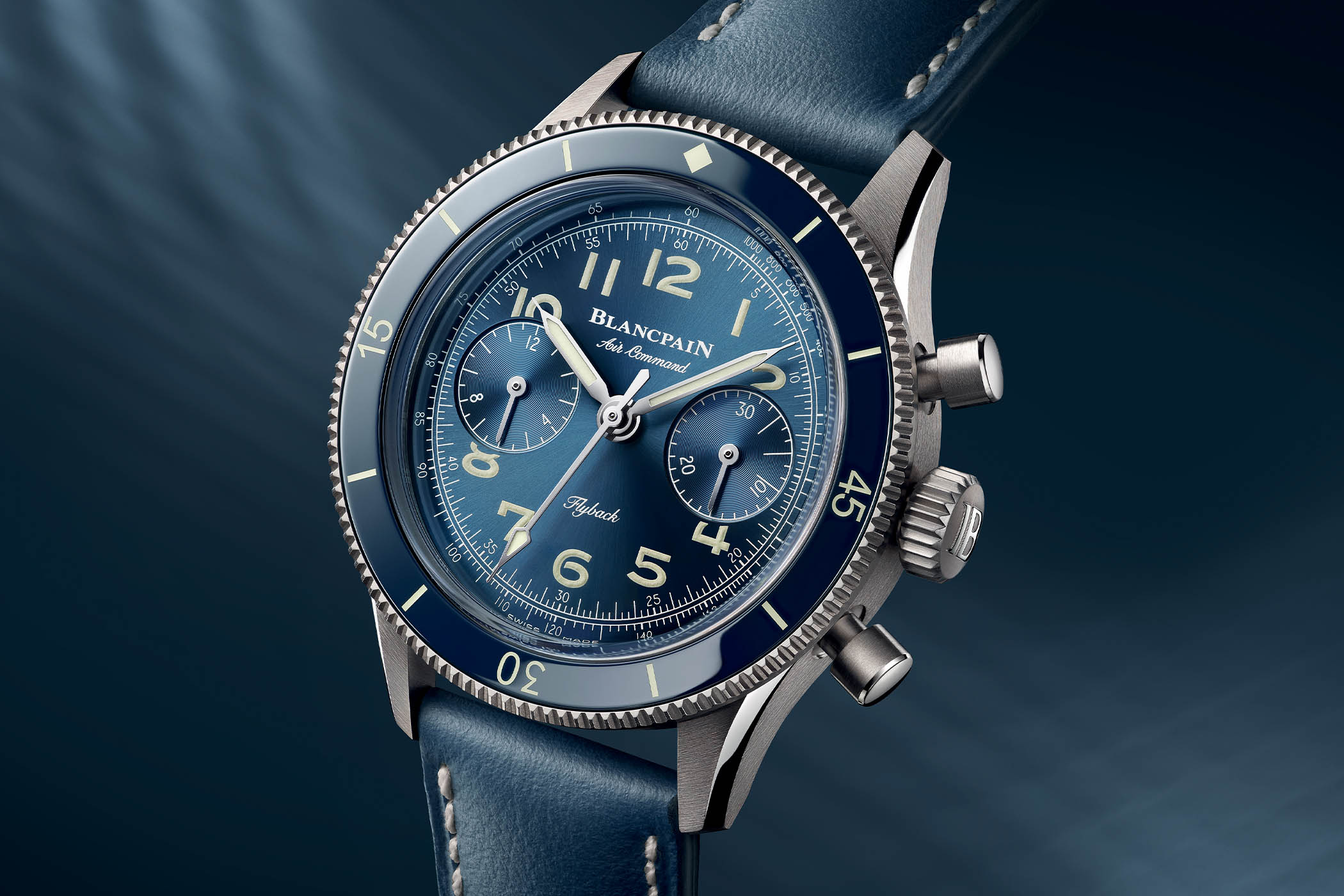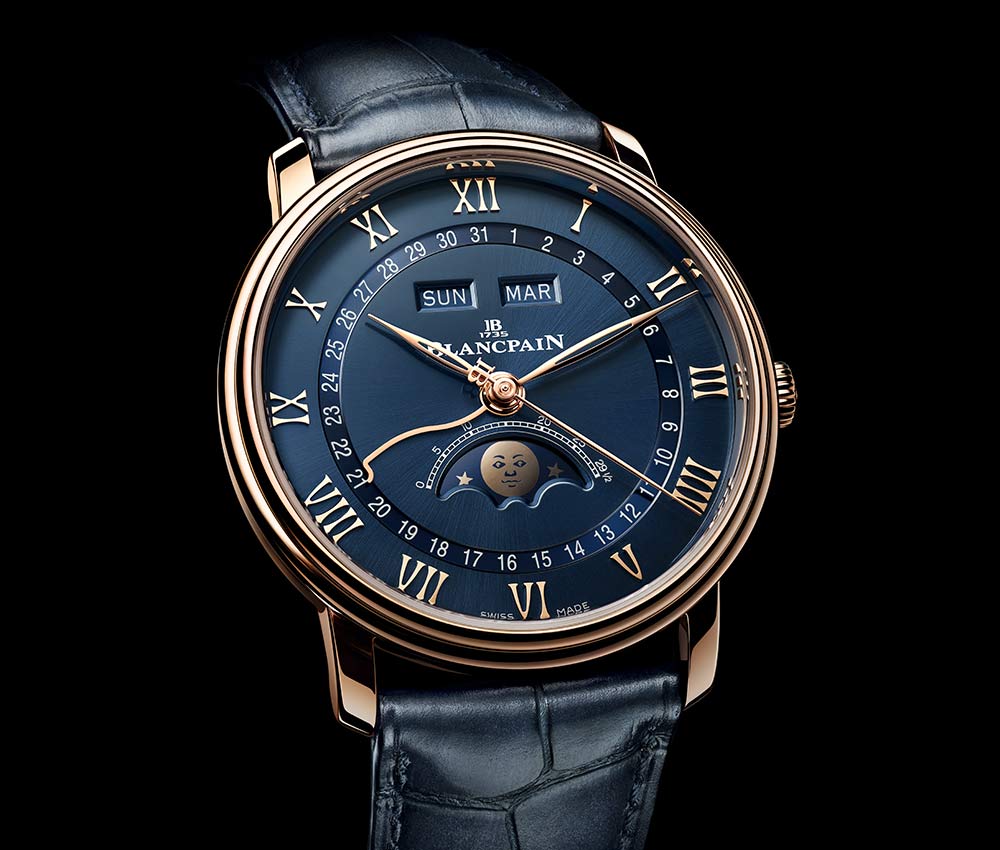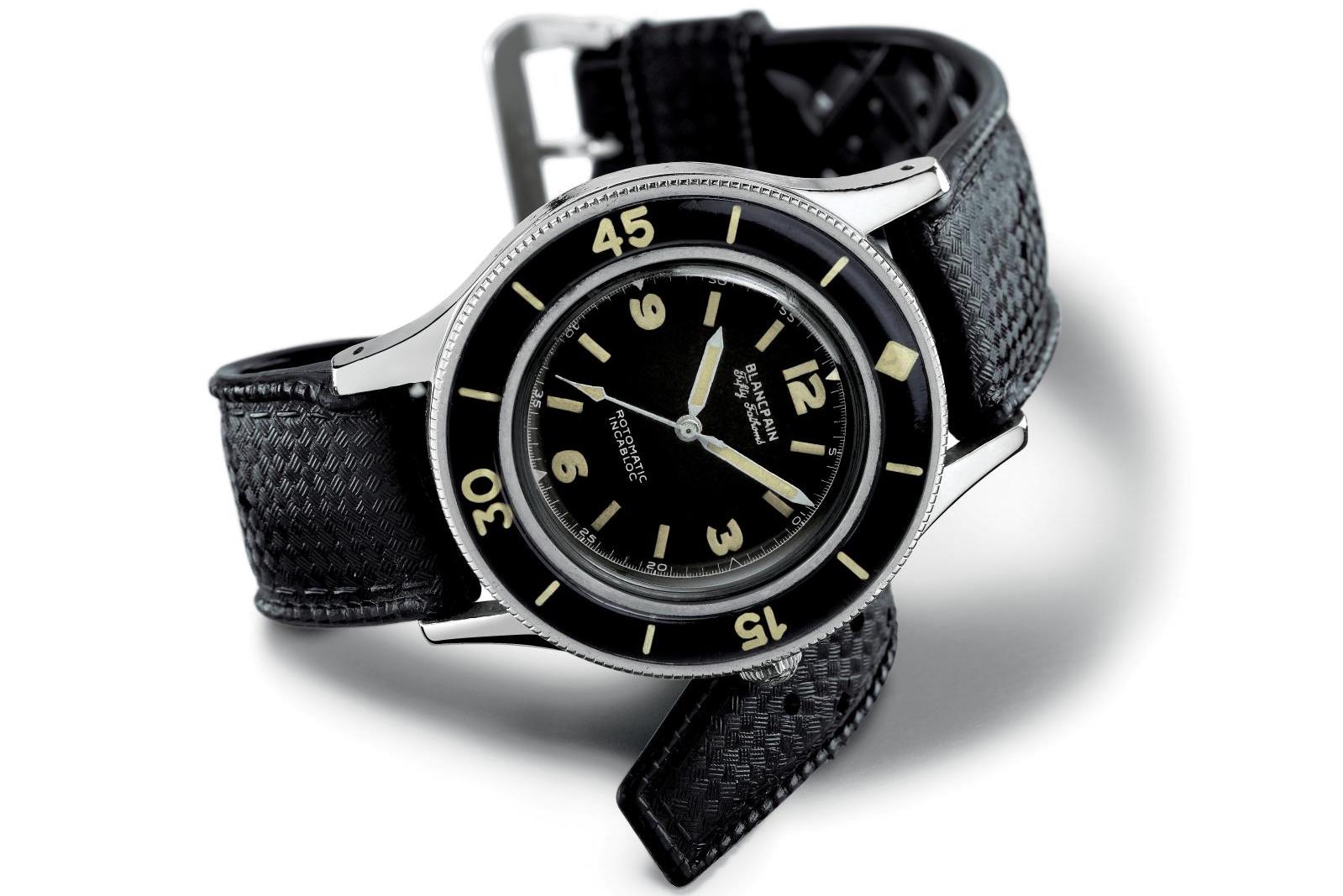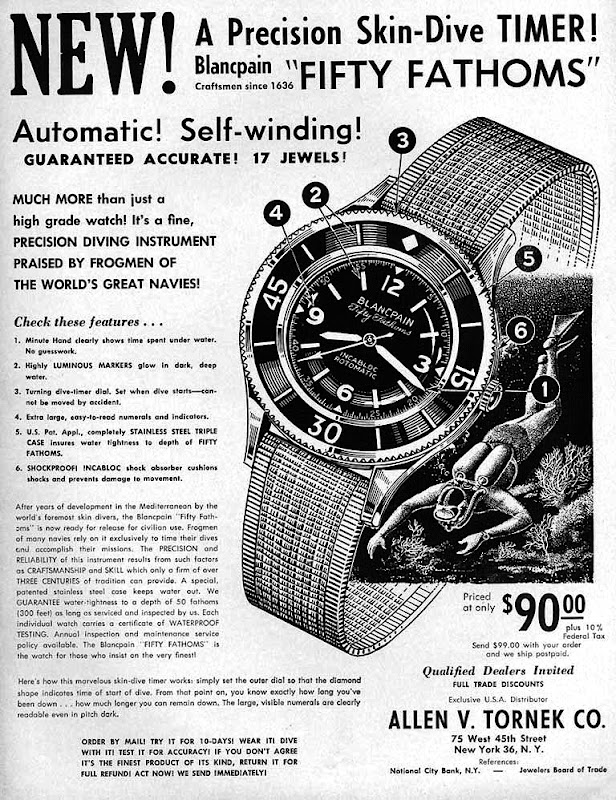
Top 25 Facts About Blancpain – Interesting Things to Know
Blancpain is one of the oldest and most prestigious luxury Swiss watchmakers. Blancpain has a long and rich history and is responsible for numerous innovations and inventions throughout the company’s lifetime.
Due to its low production in relation to some other Swiss watchmakers, Blancpain doesn’t get nearly as much exposure but it’s still an incredible brand with an incredible history and fantastic watches.
If you’re looking to learn more about Blancpain, its watches, and its history, you have come to the right place. In this article, we take a closer look at some of the most interesting facts about Blancpain.
Interesting facts about Blancpain
1. Blancpain is the oldest watch company still in production
The debate of which watch brand is the oldest is a never-ending one. At the end of the day, it all depends on how you count. Blancpain is the oldest watch company that is still active today, but it has had its ups and downs throughout its history. For some years, Blancpain was not in business and this makes Vacheron Constantin the oldest watch brand with uninterrupted production. But if we look at the oldest watch brand that is in business today, regardless if it has had an uninterrupted production or not, Blancpain is the oldest.
Blancpain was founded in 1735, making it almost 300 years old! It has lived through changing times, market fluctuations, and changes in trends, and faced many challenges (and successes) over the course of its long history. No wonder there’s a lot to say about Blancpain.
2. Blancpain is an innovative brand that has been prized many times
Whilst many Swiss watch brands are perceived as boring, traditional, and non-innovative, that is certainly not the case. Especially not for Blancpain.
Tissot’s motto “Innovators by tradition” is one that can be applied to many Swiss watch brands. They stay true to their heritage and do not compromise on the art of watchmaking. But they continue to innovate, improve, and develop new technologies that propel the watch industry and the manufacturing process forward.
As a matter of fact, Blancpain has received countless and numerous awards throughout the years which praise the company for its great achievements in the watch world. These reflect the fact that Blancpain is an important innovator and invests heavily in research and development.
3. Blancpain has never made a quartz watch
This is an incredible fact that not a lot of Haute Horlogerie watch brands can say. During the quartz crisis in the 1970s, the Swiss watch industry struggled as a result of cheap and affordable quartz watches from Japan. Many companies went bankrupt and others desperately tried to develop new watches to tackle the Japanese quartz watches. For many Swiss watch companies, this meant developing quartz watches. Blancpain is one of just a handful of Swiss luxury watch brands that can say that they have never produced a quartz watch.
As a matter of fact, even brands like Rolex, which doesn’t produce quartz today, started making quartz watches. Blancpain used to highlight this fact in its marketing by saying:
“Since 1735, there has never been a quartz Blancpain Watch. And there never will be”. A bold statement and promise from a watch brand. But one that is probably very comforting for the most devoted watch enthusiasts. Blancpain has stayed true to what it believes in and focuses on which is the art of fine Swiss watchmaking and it has built a name for itself in the industry for creating some of the most extraordinary, fine timepieces.

The above campaign was the idea of Jean-Claude Biver. As he studied the company, he found that they had never created a quartz watch and wanted to proudly highlight this fact to establish the brand as a true Haute Horlogerie manufacturer, exclusively devoted to the art of fine watchmaking.
4. Blancpain stopped its operations in 1980 for three years as a result of the quartz crisis
Blancpain did not believe in quartz and stayed true to its focus on making fine mechanical timepieces. However, the quartz crisis was a heavy blow for all Swiss watchmakers and Blancpain, like so many others, struggled. For three years, Blancpain stopped its operations but after three years, it was resurrected by none other than Jean-Claude Biver, one of the most influential and important individuals in the watch industry.
5. Blancpain resurrected the brand in 1983
Jean-Claude Biver, one of the most influential individuals in Swiss watchmaking saw the potential of Blancpain and purchased the rights for the Blancpain name in 1983.
6. Blancpain achieved production of more than 100,000 watches per year in 1959
Blancpain hit a total production of 100,000 watches in the year 1959.
To make the continued growth of the company possible, the management understood that they needed more resources and to expand their marketing. How did they solve this?
Well, in 1961, the company merged with the largest watch group at the time, the Société Suisse pour l’Industrie Horlogère (SSIH), including brands like Lemania, Tissot, and Omega.
The merging with the watch group allowed Blancpain to further grow and by 1971, the company reached a total production of more than 220,0000 timepieces, a number that the company has never reached since.
As the quartz crisis came around, the SSIH group decided that its strategy to tackle the threat from cheap Japanese quartz watches was to start producing quartz themselves. As a result of this decision, they decided to sell the company. The buyer was, as discussed above, Jean-Claude Biver (at the time an employee of SSIH), and Jacques Piguet, a movement manufacturer.
7. The founder of Blancpain started his production on the upper floor of his home
Like so many other companies, the founder of Blancpain started his production on a small scale. Jehan-Jacques Blancpain began manufacturing watches in his small workshop which was situated on the upper floor of his home in Villeret, Switzerland.
8. The company was officially registered in 1735
First starting out by manufacturing watches as a hobby, it was eventually time to establish a company in 1735 when he officially registered his business. Jehan-Jacques Blancpain started out making watches some years prior to registering the company so technically, we could even say that the business started a few years prior to the official registration date.
9. The founder was a school teacher
Jehan-Jacques Blancpain was working as a school teacher in the Jura village of Villeret, in Switzerland. The school was situated approximately 50 meters from his house. This makes Blancpain’s story even more interesting as it is a story about how a school teacher turned into a watchmaker.
To make this story even more interesting, the house where the workshop was located was not just any house. It was located on the upper floor of his farmhouse, meaning that on the first floor, he had horses and cattle. The building was first constructed in 1636 and still stands today. Jehan-Jacques Blancpain was born in 1693 to a family of farmers so it doesn’t come as a surprise that he continued the farming tradition, like so many others at the time. But the fact that he converted the upper floor of his farmhouse to make room for his workshop just goes to show his level of devotion and enthusiasm for the watchmaking craft.
He began producing parts for pocket watches, then moved on to create complete ebauche movements, and ultimately started producing complete watches by the second half of the century.
10. Blancpain was owned by the family for almost 200 years
The company was managed by several generations of Blancpain, leading to the company being in the family for almost 200 years. The end of an era for the family-run business was in 1932 when Frédéric-Emile Blancpain died. After his death, two of his best employees Betty Fiechter and André Léal purchased the company. As a result, another important milestone took place, which was that Betty became the first female to become a CEO of a major Swiss watchmaking company.
In 1950, Betty’s nephew Jean-Jacques joined the company to help out.

11. Blancpain was one of the most important companies to revive Swiss watchmaking after the quartz crisis
The quartz crisis was a heavy blow to the Swiss watch industry. Many swiss watch companies went bankrupt and the total sales of the Swiss watch industry as a whole declined heavily.
Today, the Swiss watch industry is alive, well, and booming, but the road to getting back was not straight.
In fact, Blancpain played a huge role in reviving the Swiss watchmaking industry in the late 1980s following the quartz crisis. First and foremost, the company entered a partnership with Frédéric Piguet in 1983. Secondly, Blancpain stood true to its values and continued to promote the art of watchmaking to combat the Japanese quartz watches.
12. Blancpain originally didn’t label his watches
Like so many other watch manufacturers at the time, Blancpain originally didn’t label his watches with “Blancpain” but instead sold them as “no-name”. This ultimately also allowed some to add their own names to them. The downside of this is that it is not possible to pinpoint the first creations of Blancpain as they don’t have any markings on them prior to 1800. The only watch that is signed during this era and can be attributed to Blancpain is a Louis XVI pocket watch which is signed “Blancpain et fils” on the inner back.
13. Blancpain creates between 10,000 to 20,000 watches per year
The total production number for Blancpain watches is estimated to be about 10,000 to 20,000 watches per year. Whilst the numbers are uncertain, it’s still considerably less than its peak of 220,000 timepieces produced in 1971.
This isn’t necessarily a sign that Blancpain is a much weaker company but it does focus more on quality finish, and creating more extraordinary timepieces with greater complications and attention to detail. With this said, Blancpain has moved to become a company that focuses more on Haute Horlogerie than it did in its earlier history. As a result, its watches are more expensive and this way of manufacturing also limits the ability to mass-produce as each timepiece takes a much longer time to make.
14. Blancpain released the world’s first dive watch
Perhaps the most important event in the brand’s history is the release of the Fifty Fathoms dive watch. The Fifty Fathoms is today Blancpain’s most iconic timepiece and also one of the most iconic Swiss watches ever created.
The French Ministry of Defence created the first group of combat swimmers, also known as frogmen in 1952. With the creation of this group, Captain Robert Maloubier and Lieutenant Claude Riffaud had the task of equipping the frogmen with adequate equipment that could help them in their dangerous and challenging tasks. One of the items that they needed was wristwatches. The issue was that they soon found out that the watches they needed did not exist on the market. Not only did the watches need to be extremely durable and resistant to water, but they also needed to be able to measure time underwater so that the divers didn’t run out of oxygen.

To solve this issue, they planned to find a manufacturer that could help create the watch that they needed. Maloubier had already created a design for the watch and the characteristics it needed. His design was a 42mm watch with a rotating outer bezel and large luminous markers for optimum legibility. Bear in mind that 42mm watches didn’t really exist at the time and were a size that was considered enormous.
Ultimately, they got in touch with Blancpain, at the time led by the CEO Jean-Jaques Fiechter, who was a dive enthusiast. Fiechter agreed to create the watch that three needed and the following year, in 1953 it was finished and presented at the Basel watch fair to the public.
In many ways, the watch was revolutionary and introduced many new inventions to make it live up to the strict criteria and demands that the divers needed.
Blancpain created a double-sealed crown system that was meant to protect the watch from water in case the crown was accidentally pulled out during diving – a completely new innovation. The invention was patented and meant using a second interior seal to help improve the security of the water resistance.
The second innovation for this watch was a new sealing system for the case back. The issue that Blancpain saw was that the gaskets, “o-rings” that were used to seal the case between the case back could be damaged and twisted as the case back was screwed down.
To solve this issue, Blancpain created a channel which the gasket was inserted into which was then held in place by a metallic disk.
Lastly, another issue was that rotating bezels at the time were bidirectional. This can be life-threatening for divers because if they accidentally hit the bezel and it rotates, it can indicate that they have been underwater for a shorter period than they actually have. To prevent this from happening, Blancpain developed a uni-directional rotating bezel that could help the diver measure elapsed time underwater. Blancpain patented the newly invented mechanism which prevents accidental rotation of the bezel.

15. Many special forces used the Blancpain Fifty Fathoms
The Fifty Fathoms proved to be the ultimate dive watch with exceptional performance and reliability. As a result, the watch became highly requested by other special forces who began using it. Some of the special forces that used the Fifty Fathoms include the Norwegian, German, American, Spanish, and Israeli special forces.
16. Blancpain created over 20 different versions of the Fifty Fathoms from its launch to the 1970s
As the popularity of the Blancpain increased, so did the number of different iterations and versions of it. Blancpain created many different versions for various distributors and distributors. The two primary distributors of Fifty Fathoms watches were Spirotechnique and Aqualung.
Aqualung was a company founded by the famous diver Jaques Cousteau who sold diving equipment. Watches that were sold by the company had the brand name “Aqualung” on the dial.
Spirotechnique was the official supplier of equipment for the naval forces of France and delivered all of the watches to the French forces.
17. Blancpain created the smallest round watch in the world
An important achievement for Blancpain was when it successfully created the world’s smallest round wristwatch.
Fiechter, the CEO of Blancpain had the ambition to create the smallest round wristwatch for ladies that were also high-quality, robust, and reliable. The result was the Blancpain Ladybird which was launched in 1956 and became a huge success. It measured 11.85mm in diameter and broke more than just one record. The watch also broke the record for the smallest balance wheel.
To make this tiny wristwatch possible, Blancpain had several challenges it needed to overcome in regard to manufacturing such a small mechanical movement. Blancpain added an extra when in the gear train. The benefit of this was that they could achieve a smaller size of the movement without compromising the performance.
18. Blancpain created the world’s most complicated wristwatch in 1991
Staying true to its mission of only focusing on mechanical watches, and devoting itself to fine watchmaking, Blancpain created the world’s most complicated wristwatch in 1991. The watch was the 1735 Grande Complication. It features a perpetual calendar with moon phases and age, a co-axial split-seconds chronograph, a one-minute tourbillon, and a minute repeater. The watch took over ten months of manufacturing by the most experienced watchmakers and even longer to develop from idea to finished products.
The watch was produced in a series of 30 pieces between 19991 and 2009.
19. Blancpain achieved a record with its caliber
Blancpain has achieved many records throughout its history but one record, in particular, was with the caliber 6395.
The caliber 6395 became, upon its launch, the smallest movement featuring moon passes, day, month, and date. Again, this is proof that Blancpain continues to innovate, improve, and focus on the art of fine watchmaking.
20. Blancpain had to change name after the death of Frédéric-Emile Blancpain
As discussed earlier, the last family member of the Blancpain family was Frédéric-Emile Blancpain. Upon her death, there were no longer any individuals from the family left in the company and as a result, it was forced to change its name by law.
The daughter of Frédéric-Emile Blancpain only had a daughter named Berthe-Nellie and she did not have any interest in joining the watchmaking business.
As such, the company changed its name to Rayville S.A., succ. de Blancpain. “Rayville” was a phonetic anagram of Villeret, a tribute to its founding place. Whilst the company changed its name, it stayed true to the traditions and designs of Blancpain and managed to maintain the signature Blancpain DNA, which helped them continue to build upon the legacy and reputation that Blancpain had built.
21. Blancpain created the world’s thinnest self-winding chronograph in 1887
22. Blancpain created the world’s smallest minute-repeater movement in 1987
23. Blancpain created the world’s thinnest split-second chronograph
24. Blancpain created the world’s first self-winding tourbillon and perpetual calendar
The watch featured an impressive power reserve of eight days and was launched in the year 2000.
25. SSIH purchased Blancpain in 1992 from Jean-Claude Biver
SSIH had previously had a partnership with Blancpain a few decades earlier, as discussed above, But as the company started focusing more on quartz watches, Jean-Claude Biver acquired the company and managed it. Jean-Claude Biver purchased Blancpain for $22,000 in 1981 and a little over a decade later, SSIH decided to purchase the company back for 60 million Swiss Francs.




